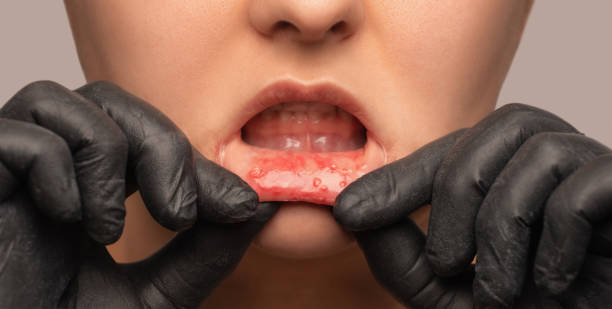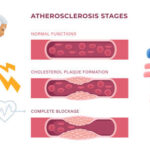HerbeeLife – Health and Wellness

Mouth ulcers, also known as aphthous stomatitis, are a common yet painful issue that many people encounter. These ulcers can significantly impact daily activities like eating and drinking, leading individuals to seek advice and relief from community pharmacies. At HerbeeLife – Health and Wellness, we aim to educate and provide practical solutions for managing oral ulceration, including recommended products available on Amazon India.
Understanding Oral Ulceration
Oral ulceration occurs when there is a full-thickness breach in the epithelium lining the soft tissues of the mouth. This condition affects a large portion of the population and can result from various causes, ranging from physical trauma to more severe health issues. Pharmacists can play a crucial role in identifying the cause of oral ulcers by asking key questions (see Box 2) and offering appropriate treatment recommendations.
Types of Oral Ulceration and Their Management
Oral ulceration can be categorized into several types based on its underlying cause. Understanding these types is essential for providing the right treatment.
1. Traumatic Oral Ulceration
Causes and Presentation:
Traumatic ulcers usually result from physical damage, such as biting the inside of the mouth or burns from hot food or drinks. These ulcers are often single, irregular, and painful. Sharp surfaces on teeth or dentures can also cause these ulcers.
Management:
For managing traumatic oral ulcers, using an antiseptic or topical anti-inflammatory spray is advisable. Over-the-counter products like warm saline mouthwash, chlorhexidine, or benzydamine spray can provide relief. Patients should also be encouraged to consult a dentist to address any dental issues causing the trauma. If the ulcer persists beyond three weeks, a visit to the GP or dentist is essential to rule out cancer.
2. Recurrent Aphthous Stomatitis (RAS)
Causes and Presentation:
RAS is characterized by painful round or oval ulcers that reappear at different sites in the mouth. It can be classified into three subtypes:
- Minor RAS: Small ulcers less than 1cm in diameter, healing within 10–14 days.
- Major RAS: Larger ulcers over 1cm that may take several weeks to heal.
- Herpetiform RAS: Multiple small ulcers that heal within 10–14 days.
Management:
Topical treatments, such as antiseptic, non-steroidal, and steroid preparations, are effective for managing RAS. For persistent cases, a doxycycline mouthwash (available by prescription) may be beneficial. However, this is not suitable for children under 12 or pregnant women.
3. Geographic Tongue
Causes and Presentation:
Geographic tongue, also known as benign migratory glossitis, is not true ulceration but presents as irregular patches on the tongue’s surface. These patches can be painful when consuming hot or spicy foods.
Management:
Although benign and noninfectious, patients can use dispersible zinc sulfate as a mouthwash for symptomatic relief. Topical treatments can also be helpful.
4. Squamous Cell Carcinoma
Causes and Presentation:
Squamous cell carcinoma in the mouth typically appears as a single, persistent ulcer. It can develop at various sites, such as under the tongue or in the retromolar region. Tobacco and alcohol use are significant risk factors.
Management:
Early detection is crucial. Any ulcer lasting more than three weeks or showing suspicious signs should prompt an immediate referral to a GP or dentist for further evaluation.
5. Primary Herpetic Gingivostomatitis
Causes and Presentation:
This viral infection, caused by herpes simplex virus type 1 (HSV-1), often affects children and presents with multiple painful oral ulcers, fever, and swollen lymph nodes.
Management:
Treatment includes supportive care with chlorhexidine mouthwash and analgesics like paracetamol. In severe cases, particularly in immune-compromised patients, antiviral therapy such as acyclovir may be necessary.
6. Lichen Planus
Causes and Presentation:
Lichen planus is an immune-mediated disorder affecting the mucosal surfaces, presenting with symmetrical white patches in the mouth. It may involve the skin as well.
Management:
While often benign, lichen planus requires symptomatic management using topical treatments. In cases associated with drug reactions, patients should be referred to a healthcare provider.
Product Recommendations for Managing Oral Ulceration
For those looking for over-the-counter options, here are some effective products available on Amazon India:
- Chlorhexidine Mouthwash
Ideal for maintaining oral hygiene and reducing bacterial load, chlorhexidine mouthwash can be a staple in managing oral ulcers. - Benzydamine Spray
This anti-inflammatory spray provides quick relief from the pain associated with mouth ulcers. - Hydrocortisone Buccal Tablets
For severe cases of oral ulcers, these tablets offer targeted relief. - Zinc Sulfate Mouthwash
Particularly useful for those with geographic tongue, this mouthwash aids in reducing discomfort.
When to Seek Professional Help
While many oral ulcers can be managed with over-the-counter products and proper oral hygiene, certain cases require professional intervention. Any ulcer that persists beyond three weeks, exhibits unusual characteristics, or is accompanied by other concerning symptoms should be evaluated by a healthcare provider to rule out serious conditions like oral cancer.
“Taking care of your oral health is not just about a beautiful smile; it’s about your overall well-being. Addressing issues like mouth ulcers promptly can lead to a healthier, more comfortable life. Remember, your smile is a reflection of your inner health—so keep it shining bright.”



